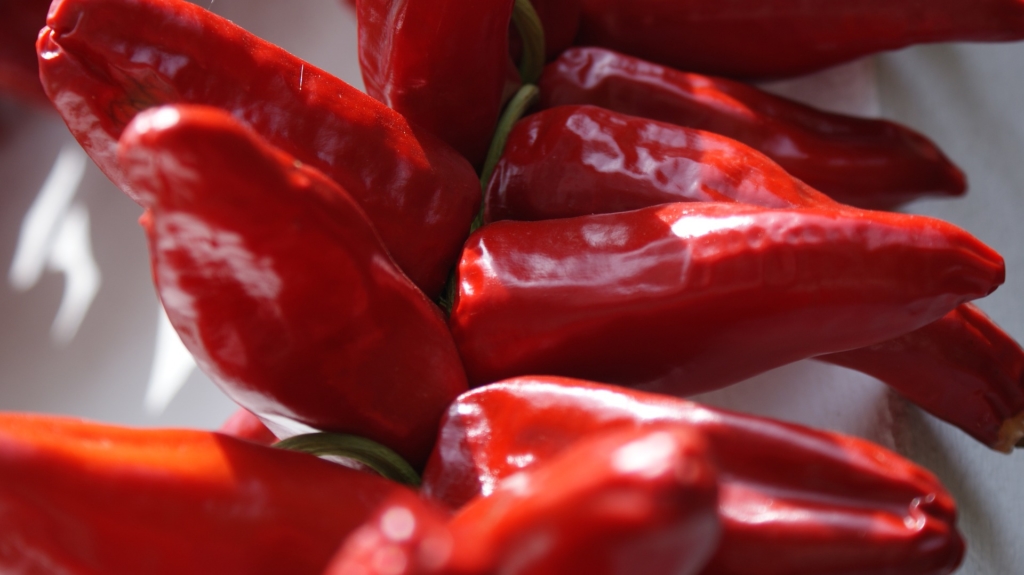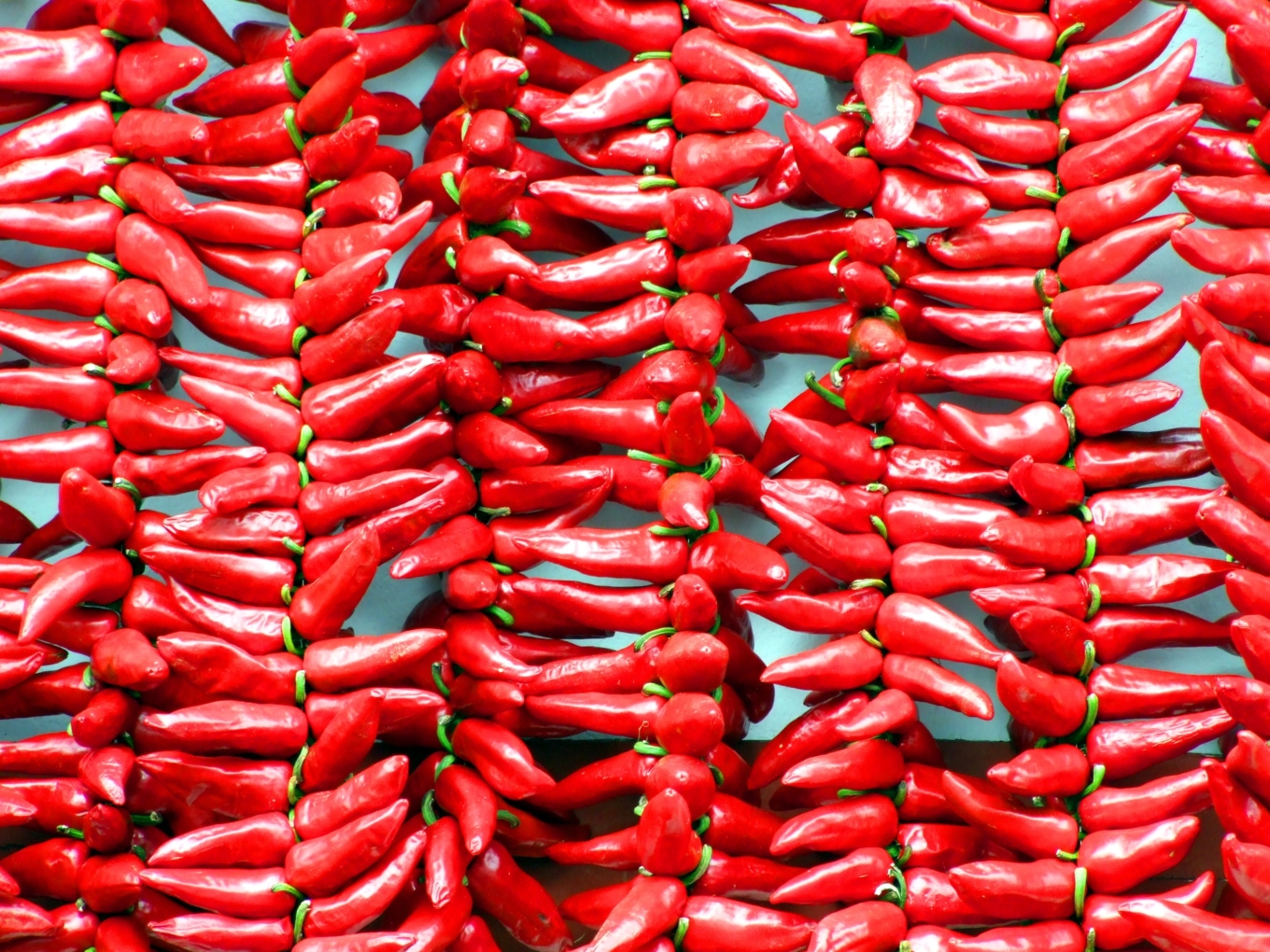What is Piment d’Espelette?
The French commune of Espelette—located along the southwest border in Basque country and thirty-five miles from the Spanish city of San Sebastian—is home to the prized espelette pepper. First brought to Europe in the 16th century from South and Central America, it was common for medicinal purposes until its gastronomic capabilities were discovered. Bright red in color and citrusy in flavor, the espelette pepper is mildly hot, and it is used either dried or ground.
Basque Cooking

The espelette pepper is a cornerstone of Basque cooking. Throughout the region, ground espelette pepper replaces ground black pepper. The classic Basque dish piperade, made with green peppers, onions, and tomatoes (which incidentally reflect the colors in the Basque flag) is flavored with it. And beyond daily household use, since 1968 there has been an annual festival to celebrate the best of the bunch.
The Basques are an important and ancient part of Europe’s history; genetic studies show that the ancestors of modern Basques lived in the region more than three thousand years ago. Seclusion from other migrating populations—whether cultural or geographical—helped the Basque people develop a closely knit cultural identity. In fact, their language, Euskara, was developed in isolation from other Indo-European languages and is unlike any other language spoken on the continent; further evidence of the culture’s unique self-contained evolution.
Cultural Significance
The espelette pepper may not have been used in Basque cooking for as long as the Basque culture has existed, but this ingredient is one of many important facets in the history of Basque cuisine and culture. The foundation of any culture is built on shared traditions, rituals, customs, and cuisines. And the espelette pepper, while small, represents a unifying element that ties all Basque people together no matter which country they live in.
How to Cook with Piment d’Espelette

When cooking with espelette pepper, this fiery ingredient pairs especially well with tomatoes. We like to season cherry tomatoes with espelette pepper, broil them until charred and juicy, and serve them over fresh pasta. More generally, replace paprika or cayenne pepper with espelette pepper for a gentle, citrusy heat. Piment d’Espelette can be purchased dried and ground or in a paste online or in specialty stores.
Feature Image: ciboulette from Pexels



